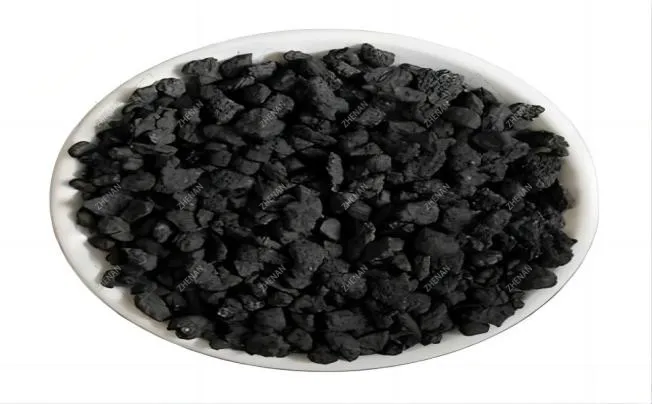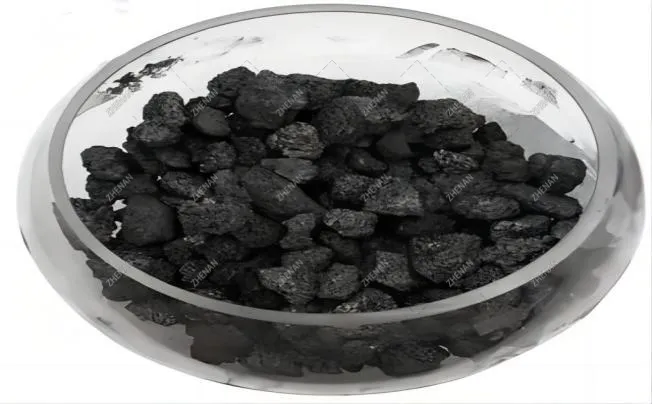What is Recarburizer?
In metallurgy, carburizes are chemicals that, during the manufacturing process, add carbon to molten metal. It is mostly used to modify the carbon content and enhance the qualities of the finished product during the production of steel and cast iron.
Typically, carbon-rich materials like petroleum coke, coal, or graphite are used to make carburizers. Before being added to the molten metal, these components are treated and pulverized into fine powders or granules. The molten metal’s carbon content rises as a result of the carburizer’s carbon interacting with it, enhancing its mechanical qualities like as strength and hardness.
Classification of Recarburizer
Many types of carburizing agents exist, depending on the materials used: graphitized petroleum coke, graphitized columnar graphite, graphitized semi-graphite, metallurgical coke, calcined coal, composite material, graphitized petroleum coke, and natural graphite.
Petroleum coke carburizer: A solid derived from petroleum refining, petroleum coke is high in carbon. It is frequently used as a carburizing agent because of its high carbon concentration and low impurity level. Petroleum coke carburizer is renowned for its consistent quality and high rate of carbon recovery.
Coal-based carburizing agent: Coal is the raw material used to make this agent; it is then processed and pulverized into fine particles or powder. In the foundry sector, coal recarburizers are extensively utilized and renowned for their affordability and accessibility.
Graphite carburizer: A kind of carbon having a layered crystal structure is called graphite. Graphite carburizers can be created from synthetic or natural graphite. Their high carbon content, low impurity content, and superior thermal conductivity are well-known attributes.
Anthracite carburizer: Anthracite is a low-volatile matter coal with a high carbon concentration. Anthracite coal, which has a low sulfur level and a high carbon recovery, is used to make anthracite carburizer.
Characteristics of Recarburizer
1. Carbon Content: The main component of the recarburizer is carbon, which is necessary to raise the metal’s carbon content. The recarburizer’s carbon content might change based on the particular application and the required carbon level in the finished product.
2. Source Material: Coal, petroleum coke, and graphite are some of the materials that can be used to make recarburizer. The desired carbon content, cost, and availability all influence the choice of source material.
3. Particle Size: Recarburizer comes in a variety of particle sizes, from bigger granules to small powders. The rate of carbon absorption and its distribution inside the molten metal is influenced by the size of the particles.
4. Chemical Composition: Recarburizers may include sulfur, ash, and volatile materials in addition to carbon. The performance and compatibility of recarburizers with various metal alloys can be influenced by their chemical makeup.
5. Electrical Conductivity: The electrical conductivity of the recarburizer is good, which is crucial for some metallurgical processes that depend on electrical resistance heating.
Corrosion Resistance: A few recarburizers have a reputation for being resistant to corrosion, including calcined anthracite. When a metal is used in hostile settings and needs to resist corrosion, this can be advantageous.
Choosing a carburizer: What qualities distinguish a superior carburizer?
- The carburizing agent has a moderate particle size, high porosity, ease of melting, and rapid absorption rate.
- There are relatively few hazardous components, a high absorption rate, low sulfur and nitrogen content, a high national carbon content, and a pure and mostly impurity-free chemical makeup.
- The finished graphite can enhance the raw iron liquid’s capacity to nucleate and has a nice crystal structure.
- Outstanding stability and functionality.
Metal smelting facilities and foundries can profit economically from the selection of an appropriate carburizing agent, as it not only lowers production costs but also enhances the quality of smelted metals and castings.
Advantages of Recarburizer
- Carbon adjustment: One of the carburizer’s primary benefits is its capacity to modify the molten metal’s carbon concentration. To make steel and cast iron with the correct carbon content, the carbon content can be accurately regulated by adding carburizes. This aids in achieving the intended performance and mechanical qualities of the finished product.
- Improve metallurgical qualities: Carburizing chemicals can improve the end product’s strength, hardness, and resistance to wear by improving the metallurgical properties of metals. Furthermore, carburizers aid in lowering the creation of unwanted phases and enhancing the metal’s microstructure.
- Increase the flammability limit: Activated carbon is one carburizer that has the benefit of increasing the flammability limit. This implies that they can enhance the stability and efficiency of metal combustion during specific metallurgical processes.
- Quick filtering: One benefit of powder carburizing agents is their quick filtration, much like powdered activated carbon. This helps with procedures that need to filter molten metal quickly to get rid of contaminants.
- Corrosion resistance: Some carburizers, including calcined anthracite, are resistant to corrosion. This is helpful in situations when the metal must withstand corrosion in challenging conditions.
- Workflow efficiency: Metallurgical operations that employ carburizers have higher workflow efficiency. It can guarantee a simple and efficient workflow, cut down on labor hours, and improve safety.









